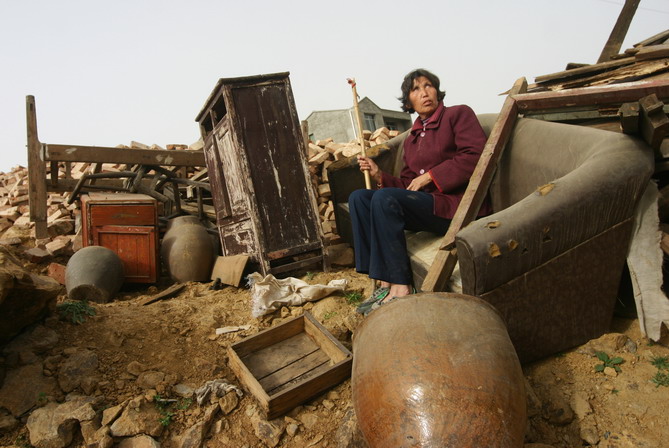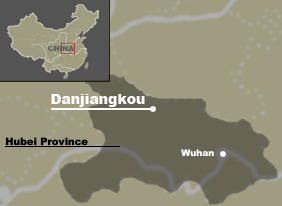
Without enough compensation to build a new house, Li Fuhua, who is blind, left her furniture outside of the migration office where she was temporarily accommodated.

Whether willing or impelled, for employment or for education, millions of Chinese are migrating. At a small county named Danjiangkou in the mid-reaches of the Yangtze River, a new form of migration was taking place. To realize the great plan of diverting water from the south to the north, locals were called on to sacrifice their homes and start new lives elsewhere.
First suggested by Chairman Mao Zedong in the 1950s, the "water diversion" program aims to ease water resource shortage in north China by transferring water from the Yangtze River through three routes--western, eastern, and the middle. Located at the beginning of the middle route, Dangjiangkou had to transfer many of its residents to other places to make room for the expansion of its reservoir.
In Caiwan village, 121 households were forced to move to vacant land below the dam. With some 10,000 yuan compensation distributed to each of the displaced, most households had to borrow money to build their new homes. Beside the residential area was a piece of open land meant for farming, but the salty soil could barely cultivate any crop, locals said. For them, it was still an extravagant hope to rebuild even their former simple lives: having a house to live in and land to work on.
| 1 | 2 |
- 深康佳A和S*ST长岭昨日遭深交所停牌处理 | 2008-03-13
- Soya Document Thick With Protectionism | 2008-03-13
- Solving the Jigsaw Puzzle of Abnormal Credit Boom | 2008-03-12
- Fixing the World's Largest Umbrella | 2008-03-11
- 中国铁建A股上市 首日涨幅28.9% | 2008-03-11











